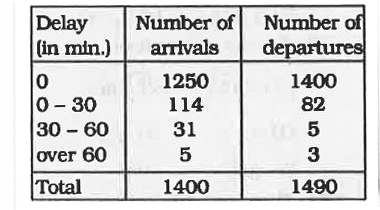What makes the steps of foot over-bridges and Railways Station to wear out slowly ?
Step-by-Step Solution:
1. Understanding the Question: The question asks why the steps of foot over-bridges and railway stations wear out slowly. This implies we need to identify the factors contributing to the wear and tear of these structures.
2. Identifying the Key Factor: The primary factor that causes wear and tear in surfaces where people walk is friction. Friction is the force that opposes the motion of one surface against another.
3. Role of Friction: When a person walks on the steps of a foot over-bridge or railway station, their foot exerts a force on the surface. The frictional force between the foot and the step surface allows the person to maintain grip and prevents slipping.
4. Effect of Friction on Wear: Over time, as people continuously walk on these surfaces, the frictional force causes small particles of the material to break away. This gradual wearing down of the material is what leads to the steps wearing out slowly.
5. Conclusion: Therefore, the frictional force is responsible for the gradual wear of the steps at foot over-bridges and railway stations. It allows for grip but also contributes to the slow degradation of the surface.
Final Answer:
The frictional force is responsible for the gradual wearing out of the steps of foot over-bridges and railway stations.
---
The frictional force is responsible for the gradual wearing out of the steps of foot over-bridges and railway stations.
Topper's Solved these Questions
Similar Questions
Straight distance between a hotel and a railway stations is 10 km, but circular route is followed by a taxi coven 23 km in 28 minute. What is average speed and magnitude of average velocity ? Are they equal ?
View SolutionWhat are the advantages of a Wheatstone bridge method of measuring resistance over other methods ?
View Solution
Knowledge Check
If Mohan sees the rising sun be hind the temple and the setting sun behind the railway station from his house, what is the direction of the temple from the railway station?
ASouthBNorthCWestDEastA passenger train running at the speed of 80 kms/hr leaves the railway station 6 hours after a goods train leaves and overtakes it in 4 hours. What is the speed of the goods train ?
A32 kms/hrB50 kms/hrC45 kms/hrD64 kms/hrA passenger train running at the speed of 80 kms/hr leaves the railway station 6 hours after a goods train leaves and overtakes it in 4 hours. What is the speed of the goods train ?
A32 kmphB50 kmphC45kmphD64 kmph
The table given below shows survey carried out at a railway station for the arrivals/departures of trains for the month of January, 2000. Study the table and answer the following questions.

The percentage of number of trains arriving late at the station is :
View Solution
Figure : Long distance power transmissions The large-scale transmission and distribution of electrical energy over long distances is done with the use of transformers. The voltage output of the generator is stepped-up. It is then transmitted over long distances to an area sub station near the consumers. There the voltage is stepped down. It is further stepped down at distributing sub-stations and utility poles before a power supply of 240 V reaches our homes.
We need to step-up the voltage for power. transmission, so that:
View Solution
Figure : Long distance power transmissions The large-scale transmission and distribution of electrical energy over long distances is done with the use of transformers. The voltage output of the generator is stepped-up. It is then transmitted over long distances to an area sub station near the consumers. There the voltage is stepped down. It is further stepped down at distributing sub-stations and utility poles before a power supply of 240 V reaches our homes.
If the secondary coil has a greater number of turns than the primary,
View Solution
Figure : Long distance power transmissions The large-scale transmission and distribution of electrical energy over long distances is done with the use of transformers. The voltage output of the generator is stepped-up. It is then transmitted over long distances to an area sub station near the consumers. There the voltage is stepped down. It is further stepped down at distributing sub-stations and utility poles before a power supply of 240 V reaches our homes.
Which of the following statement is true?
View SolutionThe table given below shows survey carried out at a railway station for the arrivals/departures of trains for the month of January, 2000. Study the table and answer the following questions.

The total number of late departures of trains is :
View Solution
